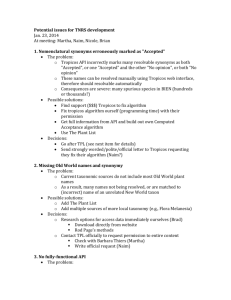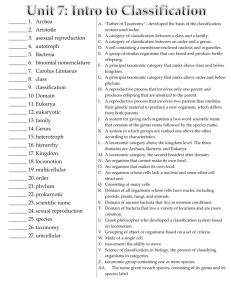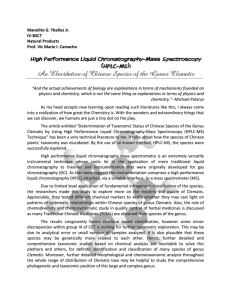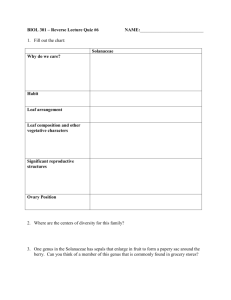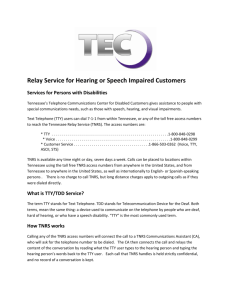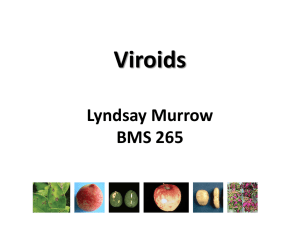How to optimize your TNRS search
advertisement
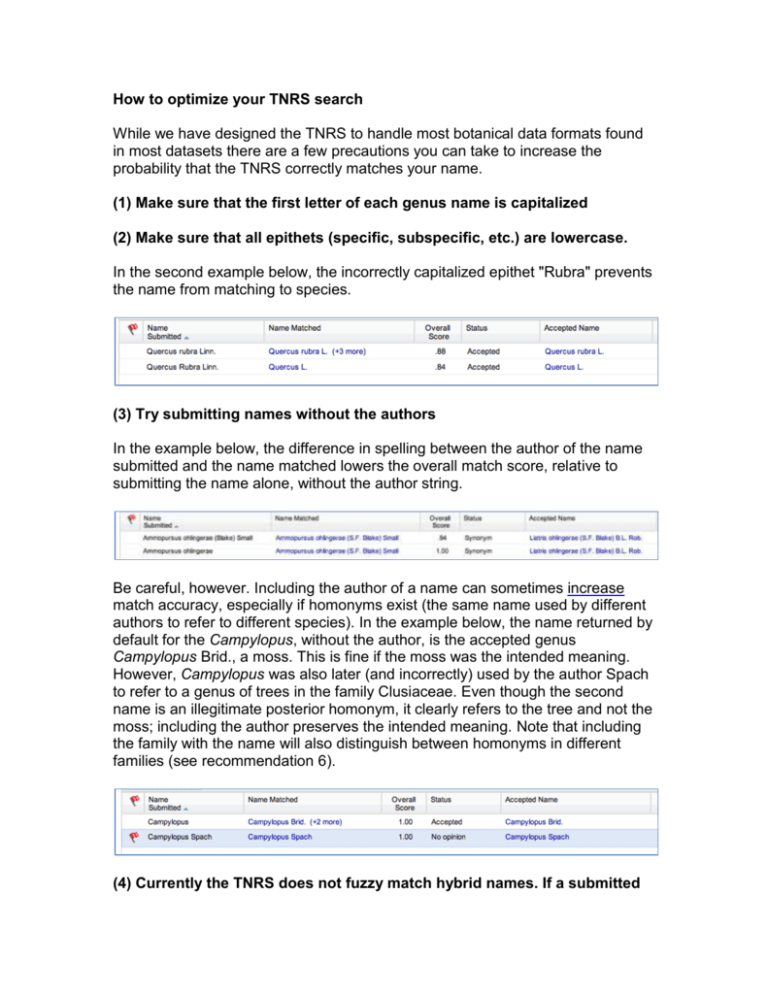
How to optimize your TNRS search While we have designed the TNRS to handle most botanical data formats found in most datasets there are a few precautions you can take to increase the probability that the TNRS correctly matches your name. (1) Make sure that the first letter of each genus name is capitalized (2) Make sure that all epithets (specific, subspecific, etc.) are lowercase. In the second example below, the incorrectly capitalized epithet "Rubra" prevents the name from matching to species. (3) Try submitting names without the authors In the example below, the difference in spelling between the author of the name submitted and the name matched lowers the overall match score, relative to submitting the name alone, without the author string. Be careful, however. Including the author of a name can sometimes increase match accuracy, especially if homonyms exist (the same name used by different authors to refer to different species). In the example below, the name returned by default for the Campylopus, without the author, is the accepted genus Campylopus Brid., a moss. This is fine if the moss was the intended meaning. However, Campylopus was also later (and incorrectly) used by the author Spach to refer to a genus of trees in the family Clusiaceae. Even though the second name is an illegitimate posterior homonym, it clearly refers to the tree and not the moss; including the author preserves the intended meaning. Note that including the family with the name will also distinguish between homonyms in different families (see recommendation 6). (4) Currently the TNRS does not fuzzy match hybrid names. If a submitted hybrid name is mispelled, the TNRS will not find it. In the example below, the first name is spelled correctly; the second name is not. (5) While the TNRS automatically strips out odd characters (punctuation, underscores_, +, % # etc.) that are not used in botanical nomenclature, names that include many such characters produce in lower match scores, potentially preventing the TNRS from discovering the correct name. Try to strip unwanted characters before submitting names Note the effect of submitting misspelled names with and without odd characters: (6) When possible, we recommend setting "Constrain best match by higher taxonomy" to ON and including family in front of the name submitted. In most cases, constraining matches by higher taxonomy provides better results by preventing misspelled genera from being matched to unrelated genera in other families. In the example below, the genus of the fig tree Ficus insipida is misspelled, producing a better match to the genus Fucus, a marine algae. Submitting the family Moraceae along with the name prevents this mismatch. Be aware, however, that the higher taxonomic constraint will sometimes prevent matching to the correct name if the genus is badly mispelled. For example, you are looking for the species "Acamptopappus sphaerocephalus" but misspelled it as "Acanthopappus sphaerocephalus". With higher taxonomic constraint ON, the TNRS will return the genus "Acanthocarpus" as the best match—the closest spelling to your misspelled genus " Acanthopappus". With higher taxonomic constraint OFF, the TNRS matches "Acamptopappus sphaerocephalus", the closest overall spelling match, and your intended name. Sometimes it is best to run you list both ways—once with taxonomic constraint ON and once with taxonomic constraint OFF—and compare the results. (7) Try lowering the match score threshold Sometimes a badly misspelled name that doesn't return a result at a match threshold of 0.40 will return a match if you set the threshold to 0.05. (8) Inspect your results! It is especially important you inspect results flagged with warnings or names with more than one possible match. Names with more than one match with have the hyperlinked words "(+x more)" after the name matched ("x" is the number of additional possible matches). Click on the hyperlink to see a list of all possible matches. Sometimes your intended name will be a lower-ranked match. This is especially important if you have set higher taxonomic constraint to ON.
